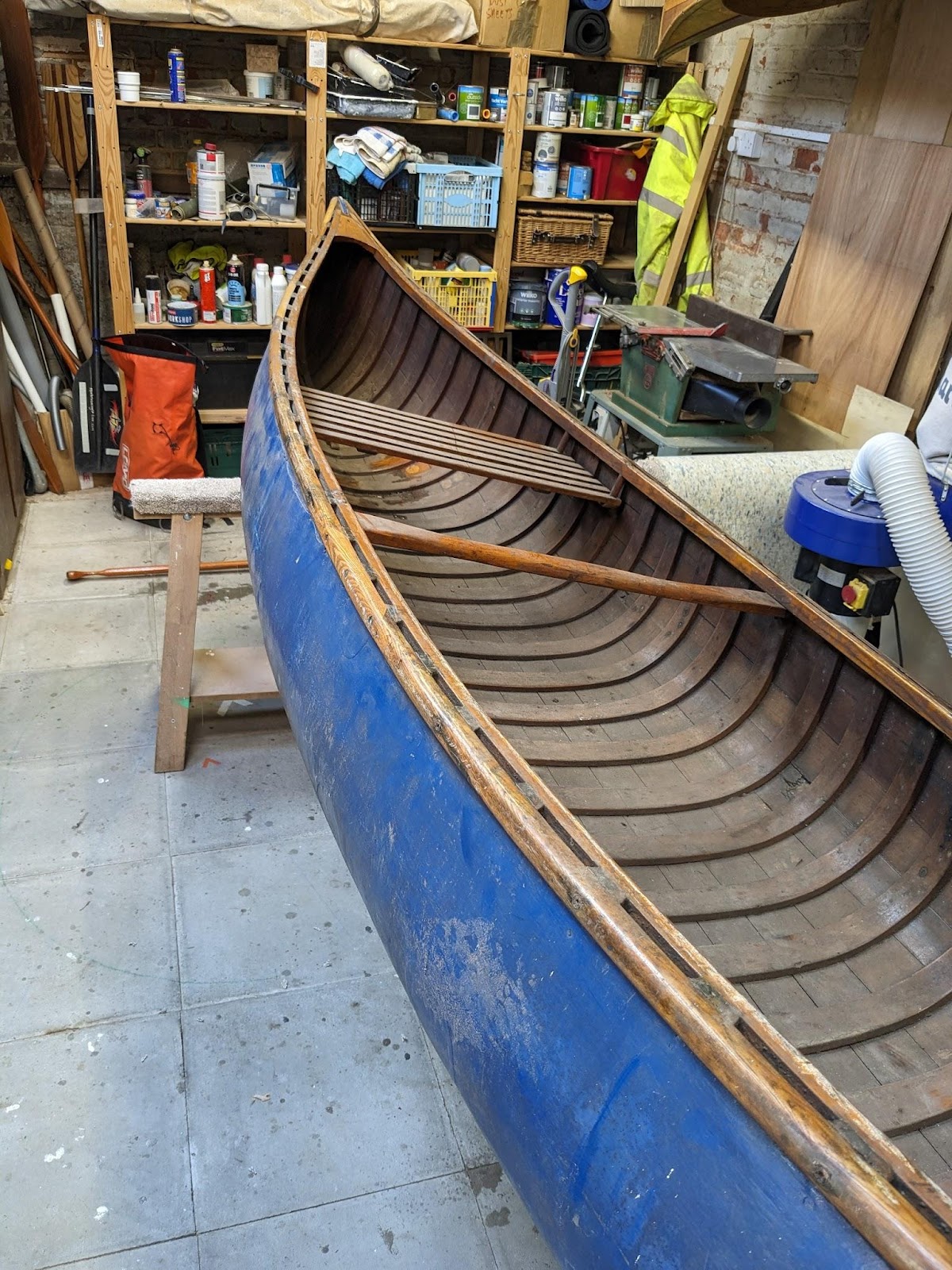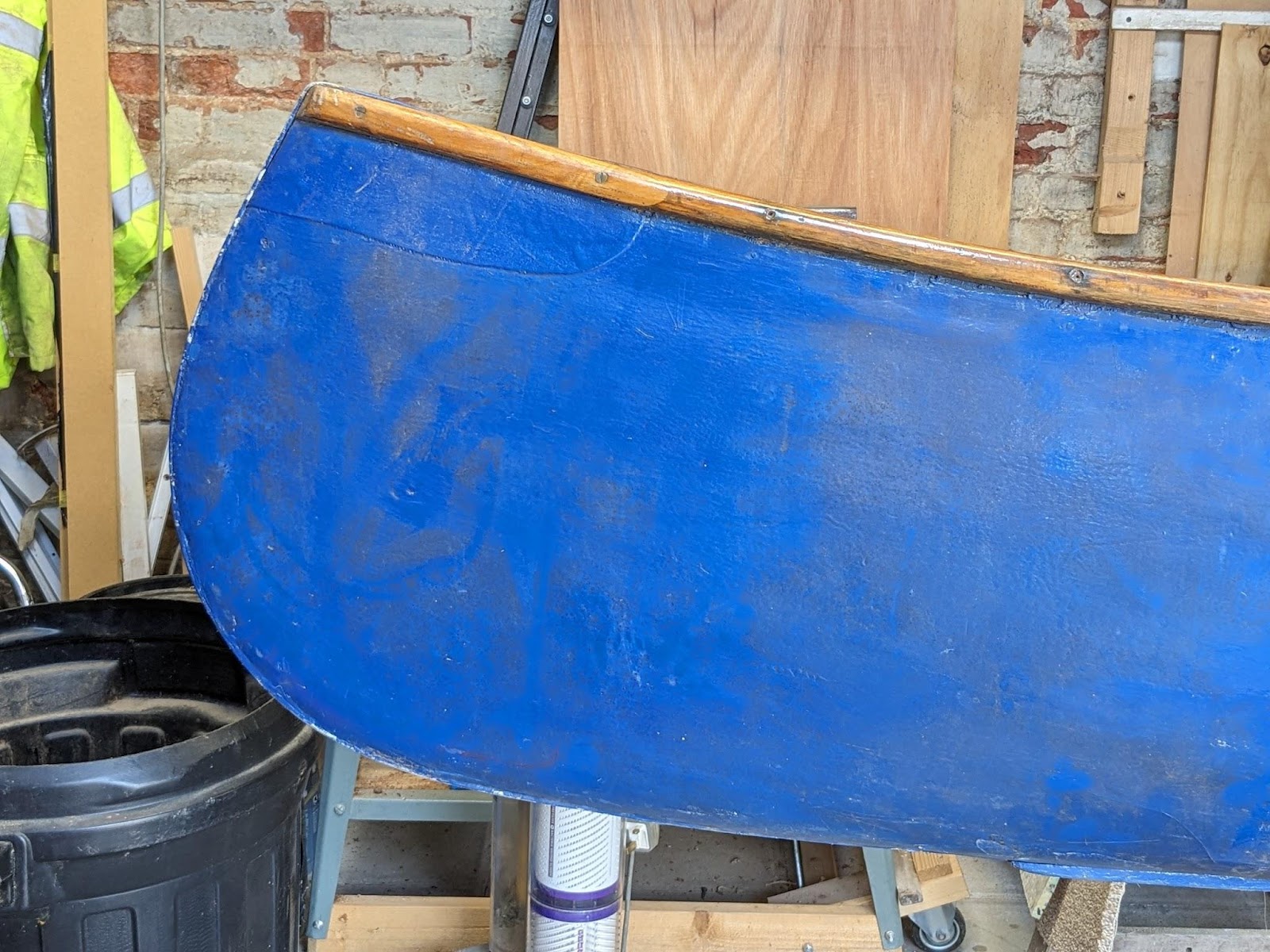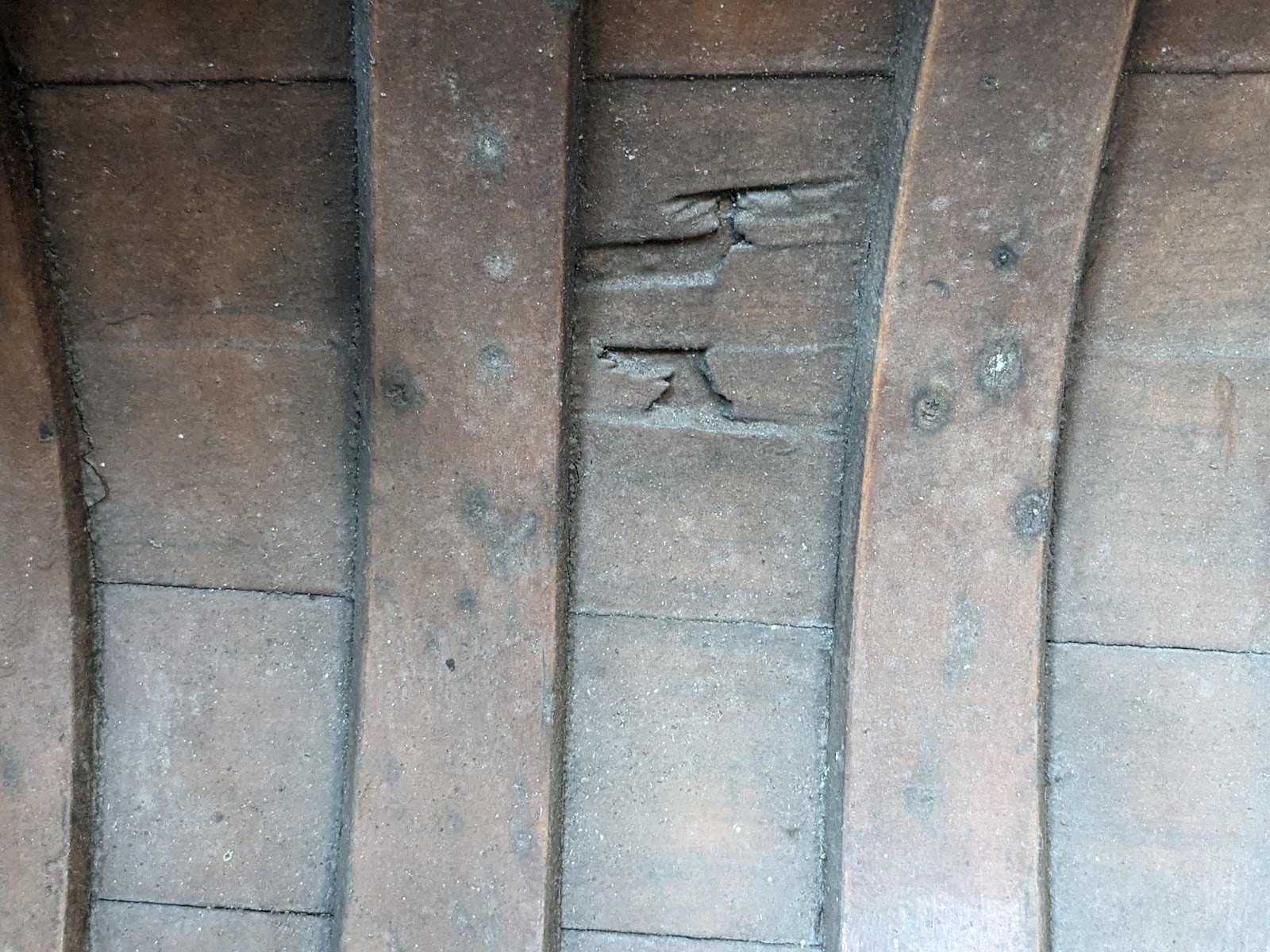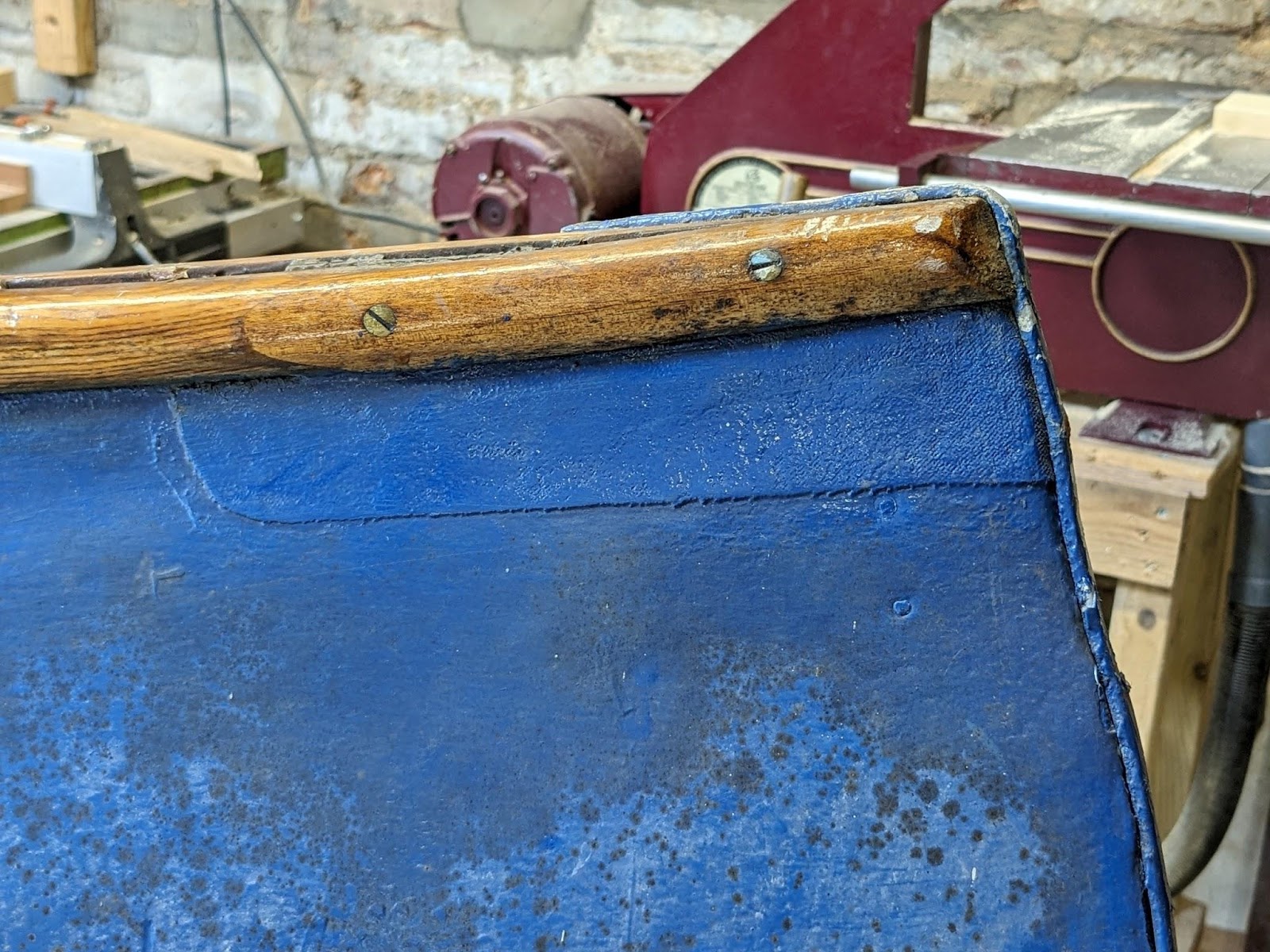samb
Wooden Canoe Maniac
Today I picked up what I think is a 14’ Prospector - a Chestnut “Fire” or a Peterborough “Pond”. Those are the nearest match to the dimensions in the Wooden Canoe Museum catalogues. I’ve looked hard but can’t work out whether there is the ghost of a decal on the bow or some varnished over scratches and bumps which look like that; I’ll need to investigate more. There are no numbers on the stems.



It has aluminium stem bands which I presume means it’s of later date towards the end of the Chestnut production in the seventies.
It has a couple of areas of damage so two areas of planking will need to be sorted and I think one rib may need replacing. The canvas looks to be original, blue at present but previously chestnut grey. There are a few patches on the outside.


The decks and gunnels have had some repairs at the tips and there is a piece scarfed into the outwale also.

Has anyone got opinions on my identification or give a more accurate approximation of date?
Sam
It has aluminium stem bands which I presume means it’s of later date towards the end of the Chestnut production in the seventies.
It has a couple of areas of damage so two areas of planking will need to be sorted and I think one rib may need replacing. The canvas looks to be original, blue at present but previously chestnut grey. There are a few patches on the outside.
The decks and gunnels have had some repairs at the tips and there is a piece scarfed into the outwale also.
Has anyone got opinions on my identification or give a more accurate approximation of date?
Sam
